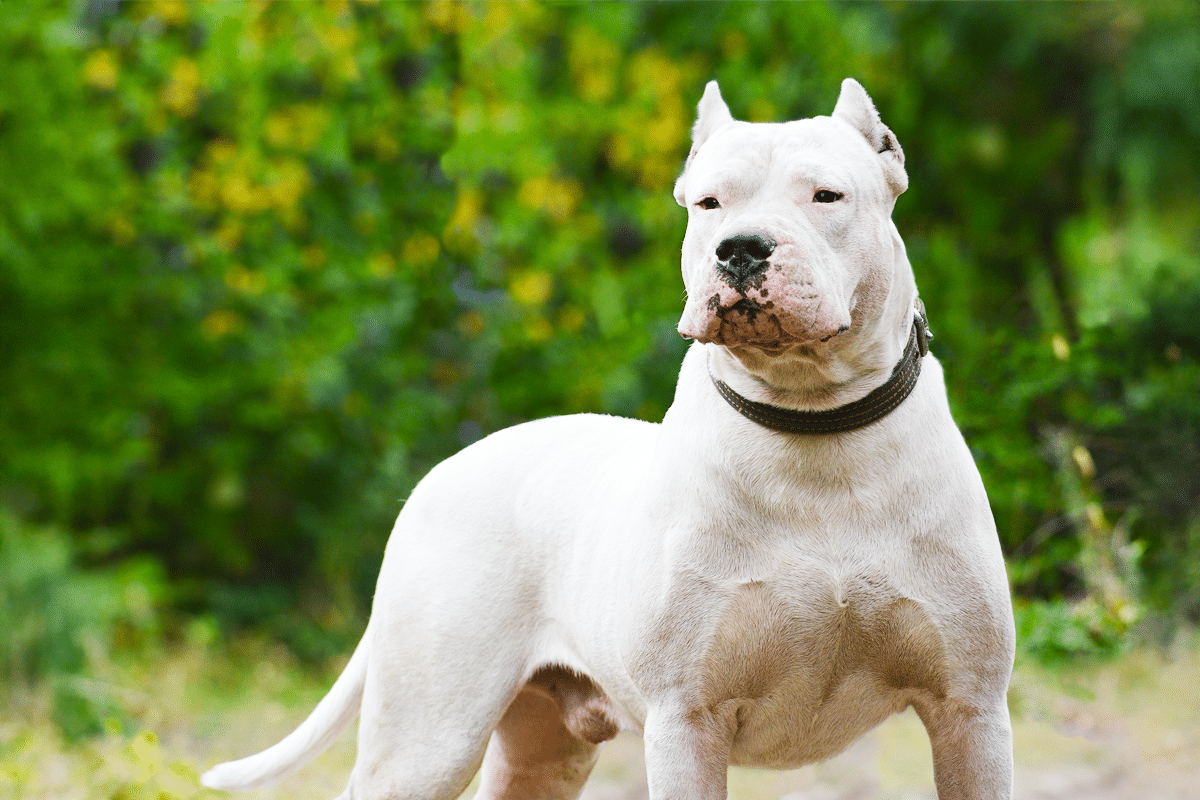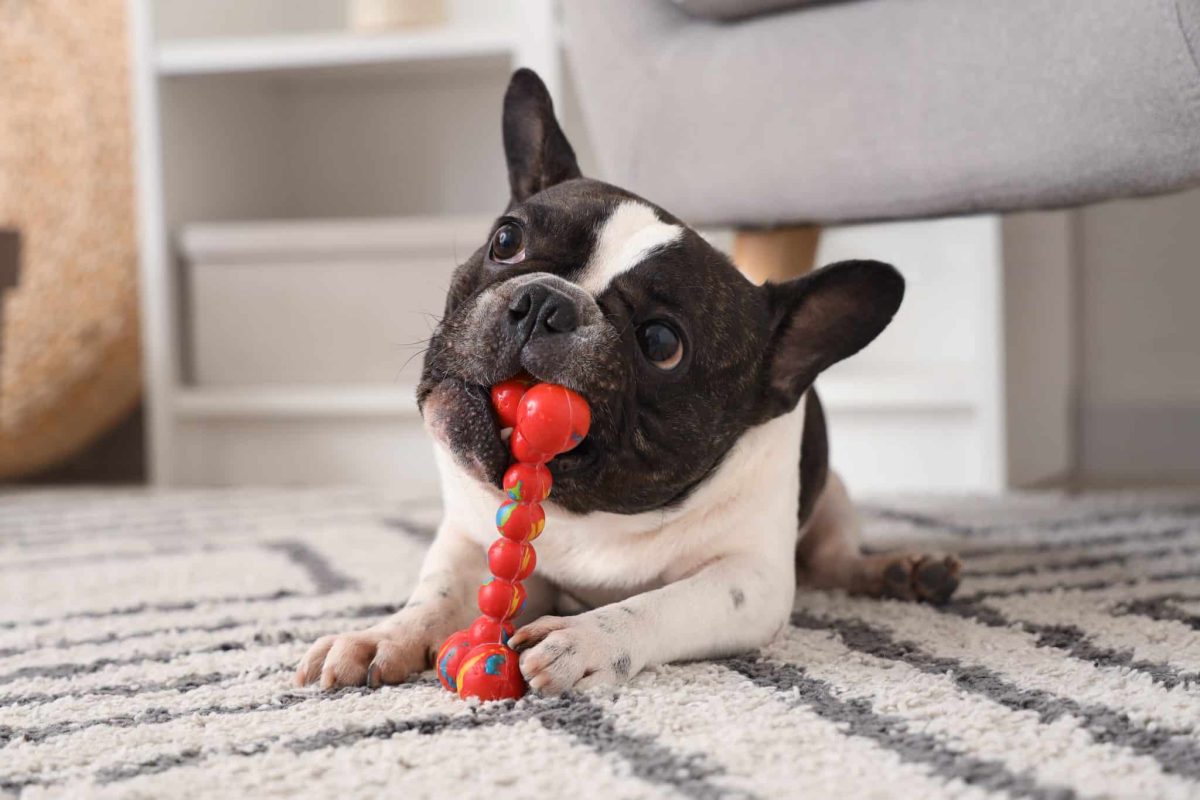If your dog is afraid of noises, please take that seriously. Sound reactivity can be debilitating, and the clinical, medical condition of sound phobia can be devastating. Neither is commonly “solved” by purchasing a product. Evidence supports the use of counterconditioning, relaxation training, and behavioral medications (Riemer, 2020).
The Pet Shell Pet House
I do not own a Pet Shell. I am reviewing the claims of their marketing materials compared to the acoustic report they published.
A new product for dogs and cats, the “Pet Shell,” has hit the market. It is a Kickstarter project and promoted as a noise-reducing pet house that “reduces sounds by more than 50%,” which is a problematic statement. The marketing materials further imply that the interior of the Pet Shell is “silent,” with multiple statements such as, “The unbeatable combination of darkness and silence (emphasis theirs) creates a calming space for your pet, similar to a den.” The silence claim is also problematic, and untrue per their own test results.
The noises they feature in a promotional video are a thunderclap, a siren, a jackhammer, a vacuum, traffic, a beeping alarm clock, and fireworks. Similarly, the sounds listed on the “Understanding Dogs’ Sensitivity” section of their Kickstarter site are thunderstorms, fireworks and gunshots, loud vehicles, sirens and alarms, construction and industrial noises, and household noises. Note how many of these include low-frequency sounds.
This product is being aggressively marketed as a solution for dogs who fear thunder and fireworks. However, Pet Shell’s own published acoustical testing report, impeccably performed at the Slovenian National Building and Civil Engineering Institute, reveals that the low frequencies of thunder and fireworks are where the Pet Shell is least effective at preventing the transmission of sound.
This is in keeping with the findings of basic physics and acoustics.
The Acoustic Testing and Report
The acoustic testing of the Pet shell was performed by a physicist with excellent credentials. The report is exemplary, with methods explained well and with sufficient detail and transparency that someone with the right equipment could replicate the testing. I am glad that Pet Shell engaged an expert who knows testing procedures and the applicable standards to do this work.
The results are well supported in the report itself, and they are in keeping with general knowledge about sound entering enclosures. I will assume the accuracy of the report findings through this blog post.
The Problematic Marketing Claims
The marketing materials contain many statements and claims that are refuted by Pet Shell’s own test results. Here are the highlights.
- Problematic Claim: The Pet Shell reduces sounds by more than 50%. The average sound reduction across the frequency bands over a range of 1–20,000 Hz was found to be 13 decibels. Since a 10-decibel reduction correlates with a decrease of the perceived sound by half (for humans), this “more than 50%” reduction can be defended. However, that average gives an incomplete picture of what is happening inside the Pet Shell. The effectiveness of sound reduction by passive means (barriers, absorption) depends on frequency. It is much easier to prevent the transmission of high-frequency sound. If you check the breakdown by frequency on the sound testing report, you see that the low frequencies from 100 to 250 Hz show much less reduction in the Pet Shell. The attenuation is 2.6 dB at 100 Hz, 4.2 dB at 125 Hz, 6.6 dB at 160 Hz, 5.3 dB at 200 Hz, and 3.4 dB at 250 Hz. These frequencies correlate with the frequencies of thunder and large fireworks, and they are being reduced much less than the average.
Please view the report to see this dramatic decline in effectiveness at low frequencies depicted graphically on page 4.
This poor performance is not at all surprising; it’s common to all barrier-based solutions. You can see a similar lowered effectiveness in the sound spectrum report for Rex Specs Ear Pro, ear protection for dogs. Passive sound barriers are not effective at preventing the transmission of low frequencies; the waves are too massive.
The Pet Shell can claim a 13-decibel reduction overall because the sound attenuation is much more effective at higher frequencies. But think what that means. An animal in the interior of the Pet Shell is in a soundscape with a predominance of low frequencies.
- Extremely Problematic Claim: “Silence.” The repeated references to silence can’t be defended. On page 4 of the report, they list the actual sound reduction of the Pet Shell in the presence of the noise source. The test noise clocks in at 94.2 dB(A) outside the Pet Shell and 81.0 dB(A) inside the Pet Shell. (See technical addendum for notes about dB(A).) Some examples of noises in that decibel range are a gas-powered lawnmower, a busy freeway at 50 feet, a loud overhead pager (intercom), an electric lawn edger, and the noise inside an airplane. Eighty-five dB is the boundary in U.S. workplaces where exposure over time must be monitored and controlled. Referring to the noise reduction inside the Pet Shell as achieving “silence” is preposterous.
- Problematic Claim: “…minimizing intense sounds – especially high-pitched ones that trigger stress…” This statement correctly identifies that the Pet Shell is more effective at decreasing higher-frequency sounds than lower-frequency sounds, as is true of any passive sound barrier. But why are they focusing on “high-pitched sounds that trigger stress” when most of the sounds they list on their sites and include in their promotional video are low frequency? Fireworks and thunder are featured over and over. Of the sounds I listed from their materials above, only the siren, the alarm clock, and some household noises stand out as higher frequency. And while there are plenty of dogs who fear high-frequency sounds (I had one), a recent study showed that thunder was the most common fear (Grigg et al., 2021, p. 4).
- Problematic Claim: The usual buzzwords for such products like “calming, safe, silent, secure,” and implications of relaxation and decreasing anxiety. I’m sure some animals enjoy the privacy, the ability to hide in a cozy place, and the moderate sound reduction at higher frequencies. But dogs inside the Pet Shell will still hear the fireworks and thunderstorms perfectly well.
Images Depicting Fireworks and Thunder Sounds by Frequency
The following images show that the weakest performance of the Pet Shell (per their report) correlates with the loudest frequencies of fireworks and thunder.
I analyzed sound recordings of fireworks and thunder in the software Audacity, and the images below show the sound spectrum, in other words, how loud the sound is at different frequencies. In the images, the horizontal (x) axis is frequency, and the vertical (y) axis is decibels. The higher something is on the y axis, the louder it is. I marked with a black rectangle the frequency area where the Pet Shell is least effective per the numbers in their report: the range from100 to 250 Hz. It correlates with the loudest frequencies of both the fireworks and thunder.
The red line in each image shows the peak, the area of maximum amplitude (roughly, volume). In both cases, it is within the area where the Pet Shell performs the worst.
See my technical addendum at the bottom if you are curious why the decibels on the y axis are negative.
I purchased the sample sounds of fireworks and thunderclaps from Pond5.com. You can listen to lower-quality previews (turn down your volume first!) of the sounds I used here (fireworks) and here (thunder). I chose recordings by ear that had plenty of low frequencies. Here are sources for information about the typical low frequencies of fireworks (Tanaka et al., 2016) and thunder (Holmes et al., 1971).
Can a Little Reduction Help My Dog?
Are you thinking, “Well, even a tiny bit of reduction in the sound of thunder is probably worth it”? If so, ask yourself whether your dog reacts only to the loudest thunderclaps. When they hear thunder that doesn’t shake the house, are they fine? In that case, maybe a little reduction could help (although they’ll still feel the house shake inside the Pet Shell). Or have they generalized to fearing most or all thunder noise? In that case, a small reduction in decibels is immaterial. Dogs often get sensitized to sounds that scare them. When this happens, the sound can scare them at lower intensities than it did originally. In these cases, a small reduction in the sound intensity would not make a difference.
 A “before” photo of clinically sound phobic Zani, who didn’t need a hiding place from sounds for her last five years because we consulted a veterinary behaviorist
A “before” photo of clinically sound phobic Zani, who didn’t need a hiding place from sounds for her last five years because we consulted a veterinary behaviorist Conclusion
The Pet Shell is expensive and doesn’t cure sound fear. It doesn’t block low-frequency sound. It’s not silent inside. Providing a hiding place is a kindness, but don’t we want more than that for our dogs—to address the fear itself?
The harm of the Pet Shell comes from the marketing claims, including that it can protect dogs significantly from thunder and fireworks. Their own report says that it can’t. People may purchase this product instead of pursuing evidence-based approaches to help their pet’s sound sensitivity.
I had an exchange with a representative of Pet Shell on social media after I made a brief critique. They were polite and open to suggestions. I asked them to put a notice on their website about how serious the fear of sounds can be in dogs, and to encourage people to seek professional help for their dogs for this problem.
References
- Grigg, E. K., Chou, J., Parker, E., Gatesy-Davis, A., Clarkson, S. T., & Hart, L. A. (2021). Stress-related behaviors in companion dogs exposed to common household noises, and owners’ interpretations of their dogs’ behaviors. Frontiers in veterinary science, 8, 760845.
- Holmes, C. R., Brook, M., Krehbiel, P., & McCrory, R. (1971). On the power spectrum and mechanism of thunder. Journal of Geophysical Research, 76(9), 2106-2115.
- Riemer, S. (2020). Effectiveness of treatments for firework fears in dogs. Journal of Veterinary Behavior, 37, 61-70.
- Tanaka, T., Inaba, R., & Aoyama, A. (2016). Noise and low-frequency sound levels due to aerial fireworks and prediction of the occupational exposure of pyrotechnicians to noise. Journal of occupational health, 58(6), 593-601.
Copyright 2025 Eileen Anderson
Photos
Photo of dog with chin on the floor courtesy of user PicsbyFran on Pixabay. I cropped it. All other photos copyright Eileen Anderson 2025.
Technical Addendum: Those Negative Decibels and dB(A)
The decibels are negative in my images because they are being measured inside a computer and not the real world. Decibels need a reference point, and there are lots of different ones used. The maximum decibels that the computer can record (so-called “full-scale”) is set at a reference point of zero. So the closer the negative number is to zero, and the higher it is physically on the image, the louder the sound is at that frequency.
The designation dB(A) in the Pet Shell report refers to a decibel scale that is weighted, taking into account the characteristics of human hearing. This can introduce error, but it’s unavoidable at this time. We don’t have a scale weighted for dogs (which is acknowledged in the report).























 English (US) ·
English (US) ·